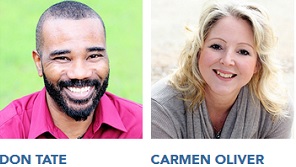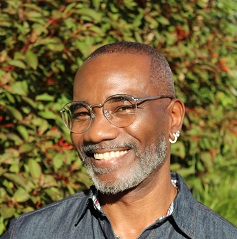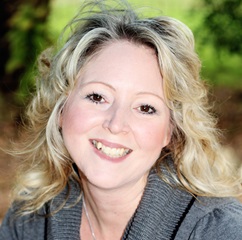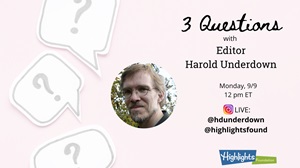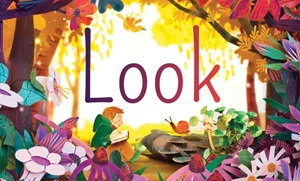 We’re giving the blog keys to Don Tate and Carmen Oliver today. They are co-faculty for our workshop The Journey: A Crash Course in How to Write Books for Children and here they answer some common questions about writing children’s books. Enjoy the conversation!
We’re giving the blog keys to Don Tate and Carmen Oliver today. They are co-faculty for our workshop The Journey: A Crash Course in How to Write Books for Children and here they answer some common questions about writing children’s books. Enjoy the conversation!
Don:
I’ve been in children’s publishing for nearly 34 years. While that makes me feel ancient, I also feel more wise. In those early days, I spent a lot of time trying to find my way through what seemed like some giant maze. Which path would lead me to my publishing goals?
What I learned: There is no one path, there are many. We’re all headed to the same place–book publishing!–but each of us will take a slightly different road. Some roads will be more smooth, they’ll get you there overnight, seemingly. Others will take you down through the valley, up over mountains, through long patches of potholes. And that’s okay, we’ll all have different stories to tell at the end of our journey.
In our four-day workshop, five esteemed children’s book authors and illustrators will help you along your road to publishing. It is our goal to instruct, advise, and provide you with some tools to be used along your way.
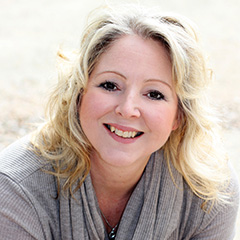 Carmen Oliver, James Ransome, Lesa Cline-Ransome, and Matthew Winner have played important roles in my publishing journey. James offered advice early in my career that led to one of my first book contracts. I am a longtime fan of Lesa’s work. Matthew Winner featured me and my book Poet: The Remarkable Story of George Moses Horton on his hit podcast “All The Wonders.” And Carmen has been a longtime critique partner and now she is my school booking agent. The connections that we make along the way are vital to our success in the children’s book business.
Carmen Oliver, James Ransome, Lesa Cline-Ransome, and Matthew Winner have played important roles in my publishing journey. James offered advice early in my career that led to one of my first book contracts. I am a longtime fan of Lesa’s work. Matthew Winner featured me and my book Poet: The Remarkable Story of George Moses Horton on his hit podcast “All The Wonders.” And Carmen has been a longtime critique partner and now she is my school booking agent. The connections that we make along the way are vital to our success in the children’s book business.
Today, Carmen poses a few questions to me, and I’ve answered briefly. I look forward to delving deeper during our workshops in September.
Carmen: I’ve written and revised my picture book, but it hasn’t sold. I’ve received rejections that say the story is too slight? And the character hasn’t been fully developed. What steps can I take to deepen the story?
Don: “Too slight” could mean just about anything, but it probably means that your story is too skinny. It may need some more flesh. Do you really know your own characters? What makes them tick? What will make them laugh or cry? What buttons, if pushed, will fill them with anger? Tap into these emotions, they are universal. Your reader will like–or dislike–your characters based on how they respond to life around them.
Carmen: How do I know when to stop researching a nonfiction project and start writing?
Don: For me, writing a picture book biography begins with tiny steps, cursory research. I might take a glance at Wikipedia. I know, Wikipedia? But yes, it’s only a start. Next, I’ll look at a few online encyclopedias, news articles, or other biographies written about the subject. Many of the subjects I write about aren’t very well known even to me, at first, so I need to acquaint myself.
At that time, if it’s a subject that really appeals to me, I begin to dig deeper. Sometimes digging deeper means taking research trips. Sometimes it helps to walk the same patch of Earth your subject once walked on. That said, I don’t know if I ever stop researching my books. Strong as Sandow has been published for well over a year, but I still find myself searching for unearthed clues to his story.
Carmen: I find myself in “analysis paralysis” mode, when do I know my picture book is ready to submit to an agent or editor?
Don: Resist the urge to share a new work with an agent or editor before it’s ready. Author Chris Barton (Dazzle Ships) was also one of my early critique buddies. I remember sharing several first drafts with him, thinking that after his feedback, they were ready to share with an editor. Chris told me to slow my roll. Well, those weren’t his words exactly, but that was the gist of his advice. Remember, you get one opportunity to make a first impression. A great idea presented too early is not going to leave the best impression with an editor.
Carmen:Why does it take so long for a children’s picture book to publish?
Don: I used to ask that question myself. For years, I worked at a newspaper. Lengthy stories were researched, written, illustrated or photographed, edited, revised, and published in just a few hours. So the idea of a 300 word picture book taking years to make made no sense to me. A picture book, however, is not going to be tossed in the garbage the next day or lining shelves. They will live on for years. Good ones will get passed down to future generations of children. Classics don’t happen overnight.
One thing to keep in mind is that editors juggle many books at one time. Marketing departments will need to plan best ways to get your book into the hands of children. Art directors need time to experiment with layouts, fonts, paper stock, jackets. And an illustrator, who has a life outside of making books, needs time to create the visuals that will bring your story to life. Also, most picture books are printed over seas and shipped (actually on a ship) here to the states.
Carmen: I’ve been told my children’s book reads like an article, what can I do to develop it into a picture book?
Don: A picture book is a story…unless it’s not. I mean, some nonfiction picture books are expository. They seek to examine, explain, describe a narrowly focused topic: planets, construction cranes, lizards, the desert. But if you’ve written a story, it had better be a story. Necessary story components are: A beginning, a middle, and an end, with rising and falling action leading the page turn. That may seem simple, but it’s the first thing my agent and editors look for when considering a new manuscript. They examine my story structure, and if something is missing, I get sent back to the drawing board. Well, not exactly, but you know what I mean.
Carmen: My children’s book reads too adult-like. What does that mean?
Don: Heck, I don’t know. One thing I’ve learned is that whatever advice one editor might suggest, another editor may offer something very different. Again, there is no one way. Before my book Poet was acquired by an editor at Peachtree, another editor considering it for publication asked me to remove details they felt too adult. Wanting to sell the manuscript, I removed those details. The editor who acquired Poet felt like those details informed who my character ultimately became. Poet went on to win a few awards. Picture book making is an art, and art is subjective.
Carmen: What are considered kid-friendly topics for the picture book age?
Don: Is there really a such thing? I mean, children are interested in all kinds of things. If it exists in this world, children will want to know about it, and so we need good books to inform. Before writing my Eugen Sandow book, I questioned its kid-friendliness. Would the subject of bodybuilding interest a child? Muscles and nice abs, I figured, is a very adult thing. But the desire to improve oneself is universal. Eugen Sandow was born sickly, but by the end of his life, he’d built up his health and had become known as “The Strongest Man on Earth.” Throw in some handlebar mustaches, strongmen in pink tights, some one-thousand-pound barbells–you’ve captured the interest of a child.
Carmen: My book is in rhyme and I’ve been told to take it out of rhyme. I see rhyming books sell all the time? What’s wrong with writing in rhyme?
Don: At a writing conference I attended a few years ago, author Jane Yolen said it best: “Just don’t write bad rhyme.”
Carmen: What does it mean when we’re told to write visually or my story is doing too much telling and not enough showing?
Don: As an illustrator, I’m always asking myself what things look like. Are a character’s clothes old or weather-worn? Is a character’s skin brown or the color of a chestnut? Is a building tall or mountainous? Writing is like painting a picture but with word. As a writer, create vivid images with words.

